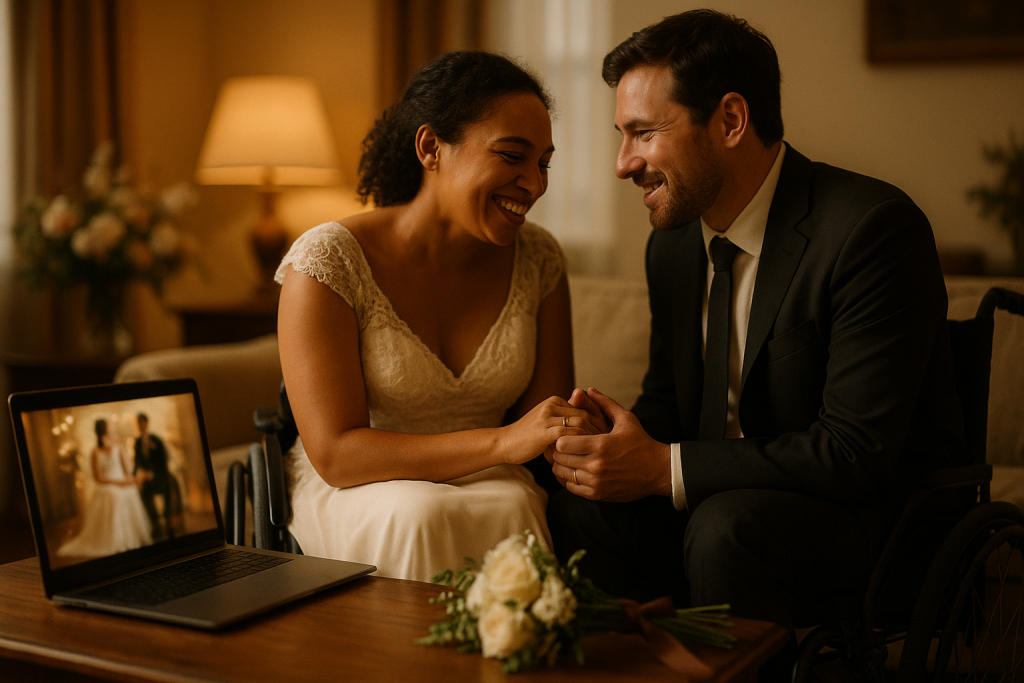Hey there! If you’re considering tying the knot through a virtual marriage, you might be wondering about the legal recording requirements to ensure your ceremony is recognized and valid. Let’s dive into what you need to know to make your online wedding both memorable and legally binding.
Ensuring Legal Compliance with Virtual Marriage Laws
Virtual marriages have opened up new possibilities for couples worldwide. However, it’s crucial to understand the specific legal requirements that govern these ceremonies. For instance, in Utah, a pioneer in legal virtual marriages, the state mandates that all participants—the couple, officiant, and witnesses—must be able to see and hear each other in real-time during the ceremony. This live video interaction ensures that all parties are present and consenting, which is a cornerstone of a valid marriage. According to the Utah County Clerk’s Office, during a remote appearance ceremony, “the officiant, the couple, and witnesses all need to be able to see and hear one another and be seen and heard by one another.”
Officiant’s Physical Presence: A Key Requirement
Another critical aspect is the officiant’s location. Some jurisdictions require that the officiant must be physically present within the state during the ceremony. This stipulation ensures that the marriage falls under the state’s jurisdiction, providing legal clarity and consistency. As stated by the Utah County Clerk’s Office, “the officiant must be physically located in the state of Utah at the time of the ceremony.”
Protecting Against Fraud and Misuse
The live video feed requirement also serves as a safeguard against potential fraud or misuse of the virtual marriage process. By having all parties visible and audible during the ceremony, it becomes significantly harder for unauthorized individuals to impersonate someone else or for coercion to occur unnoticed. This transparency upholds the authenticity and legality of the marriage.
Facilitating Clear Communication and Consent
Marriage is a significant commitment, and clear communication is vital. A live video feed allows the officiant to observe the couple’s demeanor and ensure that both parties are willingly entering into the union. It also enables the couple to fully participate in the ceremony, making the experience more personal and memorable.
Meeting International Recognition Standards
For couples seeking international recognition of their marriage, adhering to live video feed requirements can be beneficial. Many countries have specific standards for recognizing marriages, and a documented live ceremony can provide the necessary evidence of a legitimate union. This is particularly important for immigration purposes, where proof of a bona fide marriage is essential.
How to Prepare for Your Virtual Wedding
To ensure your virtual wedding goes off without a hitch, consider the following steps:
- Test Your Equipment: Ensure your internet connection, camera, and microphone are functioning correctly before the ceremony.
- Choose a Quiet, Well-Lit Location: This helps all participants see and hear each other clearly.
- Coordinate with Your Officiant and Witnesses: Make sure everyone understands the platform being used and the ceremony’s schedule.
- Understand the Legal Requirements: Familiarize yourself with the virtual marriage laws of the state where the ceremony will be conducted to ensure compliance.
FAQs
Is a live video feed mandatory for all virtual marriages?
Yes, many jurisdictions require that all participants in a virtual marriage ceremony can see and hear each other in real-time to ensure the marriage’s legality.
Can our officiant be located outside of the state during the ceremony?
It depends on the state’s laws. For example, in Utah, the officiant must be physically present within the state during the ceremony to comply with state laws.
Do our witnesses need to be in the same location as us?
No, witnesses can join the ceremony remotely, but they must be able to see and hear the proceedings in real-time.
What platforms can we use for the live video feed?
Common platforms include Zoom, Skype, and Google Meet. Ensure the chosen platform supports real-time video and audio communication.
How do we obtain our marriage certificate after the virtual ceremony?
After the ceremony, the officiant will finalize the license, and you will receive a certified copy of your marriage certificate from the issuing county.
Embarking on a virtual marriage is an exciting journey, and understanding the importance of a live video feed ensures your ceremony is both legal and memorable. If you have any questions or need assistance navigating the process, feel free to contact us. We’re here to help make your virtual wedding dreams a reality!




